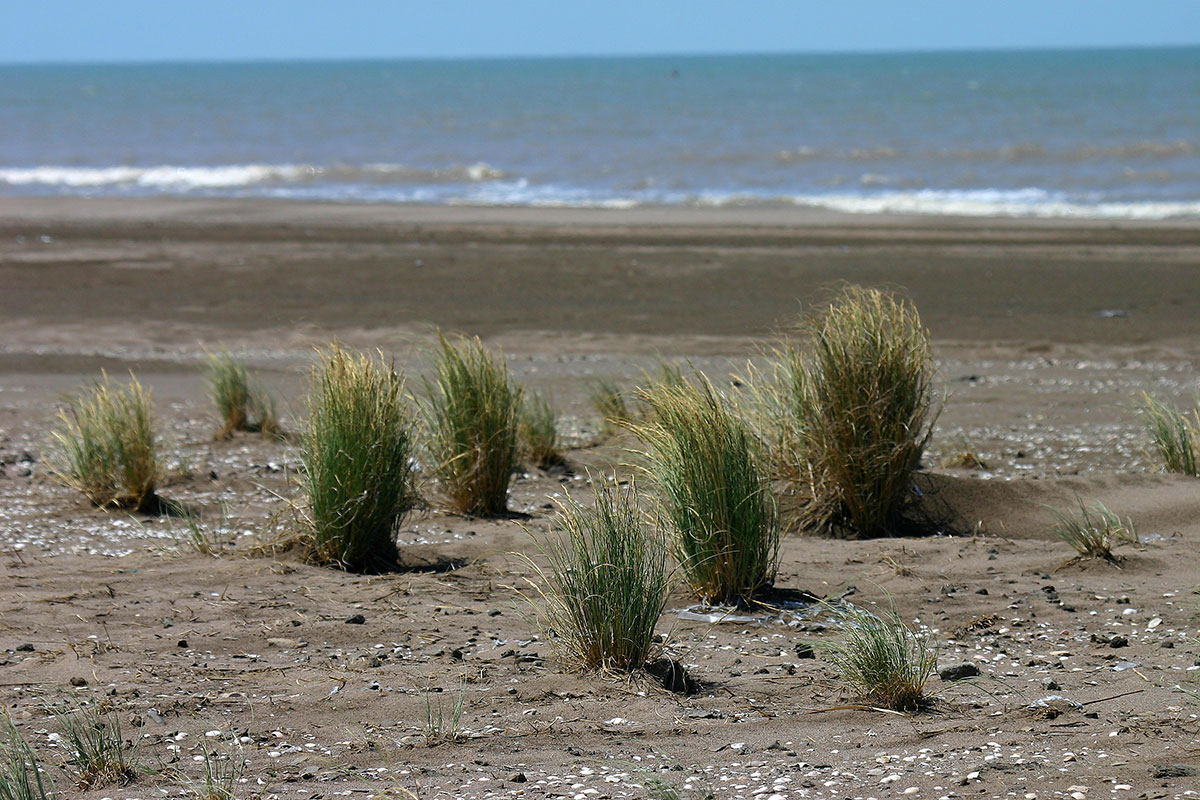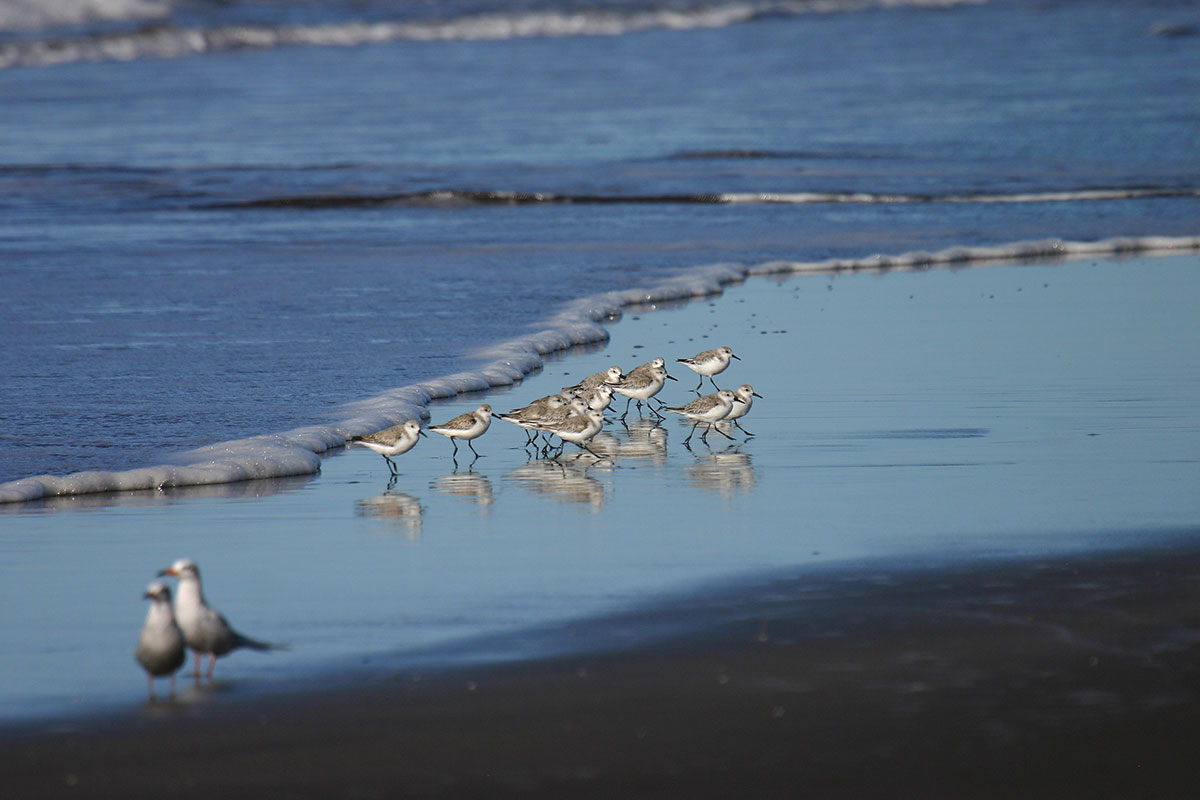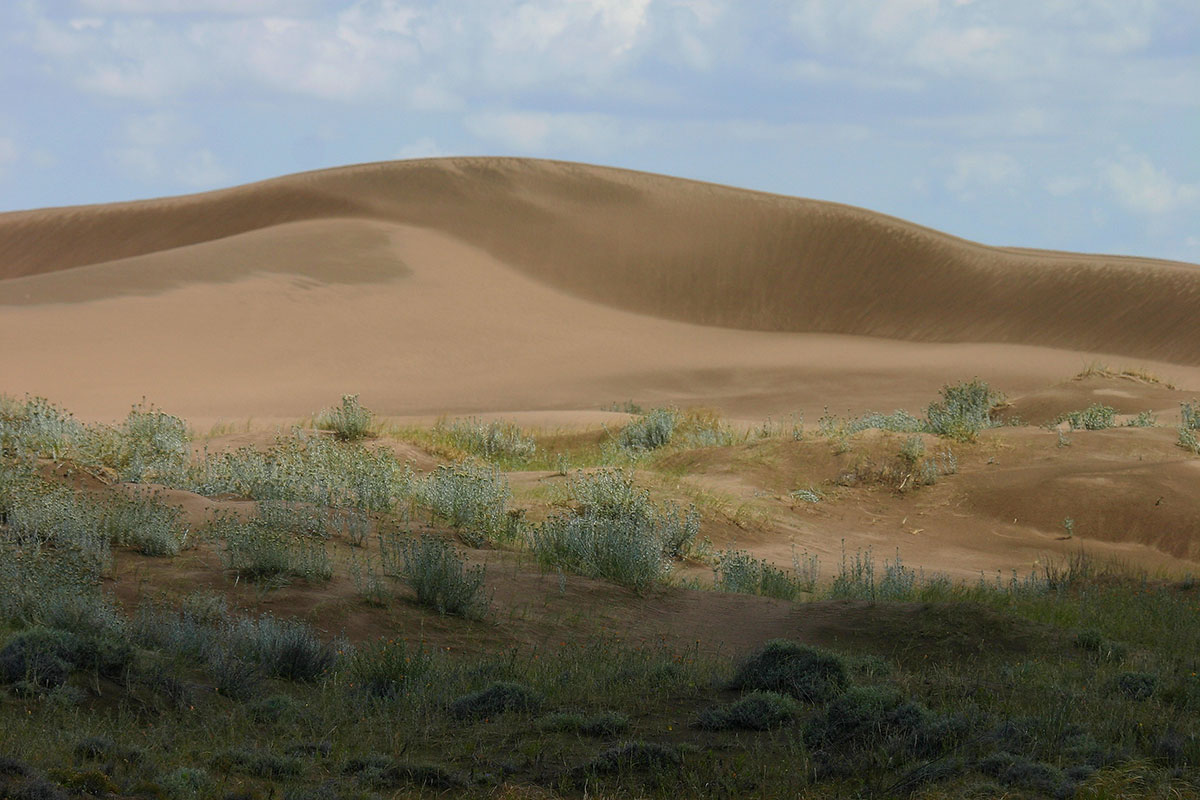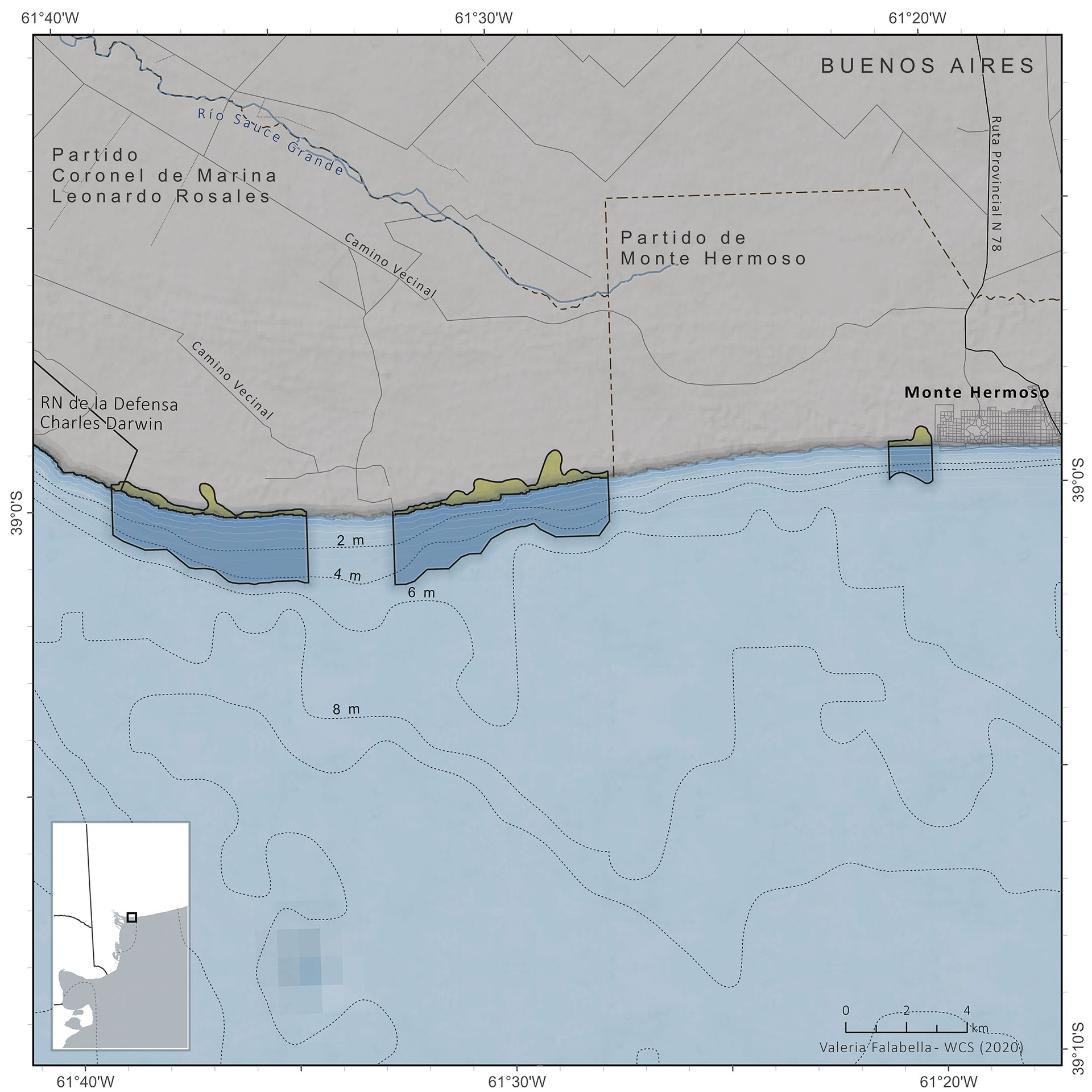Cover Photo © Pablo Petracci
Description
The Pehuen Có-Monte Hermoso Reserve is located in the area of Balneario Pehuen-Có, in the district of Coronel Rosales. This district has been the scene for millions of years of diverse geological and climatic events that have been documented in numerous rocky outcrops, sedimentary deposits and stratigraphic profiles that extend along its coasts, and that constitute paleontological deposits of inestimable scientific value. On its beaches we can find traces of gigantic fauna and human footprints that inhabited the original environment, formed by an estuary and a large lagoon, dating back thousands of years.
In the area there are three main paleontological sites:
Farola Monte Hermoso, Barranca Monte Hermoso or Las Rocas, located at the western end of the area. These are cliffs that constitute a cut or stratigraphic profile containing remains of fauna (mammals, birds, reptiles, fish and amphibians) extinct, with an age of between 5 and 3 million years and was first visited in 1832 by Charles Darwin during his trip around the world.
El Barco Beach. Located about 1,000 meters west of Pehuen-Có, it has provided numerous remains of extinct mammals with an approximate age of 16,000 years.
Paleoicnites deposit. These are outcrops of sedimentary rocks, mainly clayey, deposited in continental lagoon environments about 12,000 years ago. It is located about 2,000 meters east of Pehuen-Có and extends along another 3,000 meters of beach. Thousands of tracks of extinct animals (megatheres, mastodons, macrouquenias, glyptodonts, bears, etc.) have been imprinted (fossilized) on these rocks, which coexisted with other present-day animals (flamingos, pumas, deer, guanacos, etc.), which watered and fed in the area.
Geographic Location
Province
Buenos Aires
Coordinates
-38.99° Latitude S
-61.41° Longitude W
Size and Limits
Legal Aspects
Jurisdiction
Provincial
Year of Creation
2005
Creation Legislation
Law 13394
Eco-regions represented
Marine
Argentine Province
Ecoregion of the Buenos Aires – Uruguayan Platform
Land
Pampa Ecoregion
Conservation Objectives
It is a reserve of unique archaeological and paleontological value, located in the province of Buenos Aires. On its beaches we can find gigantic fauna footprints and human footprints of those who inhabited the original environment. It consists of an estuary and a large lagoon, dating back thousands of years. In Pehuen Co there is an archaeological site with megafauna footprints, among which the megaterium, a giant sloth bear more than six meters high. Traces of macrauquenia and toxodon were also found. A few kilometers away, in Monte Hermoso, there is a site in an excellent state of conservation, with human footprints, where original settlers processed marine fauna for their food. These reserve areas are made up of sedimentary rock outcrops corresponding to the Pleistocene Period and archaeological sites from the Quaternary Era with a rich diversity of fossils and footprints. This area is a representative sample of the present marine coast, with the presence of migratory birds from the Northern hemisphere and Patagonia.



Management
Management effectiveness and evaluation year
56 % – METT Evaluation (2014)
Sources consulted: Provincial Law No. 13,394 (1991).


